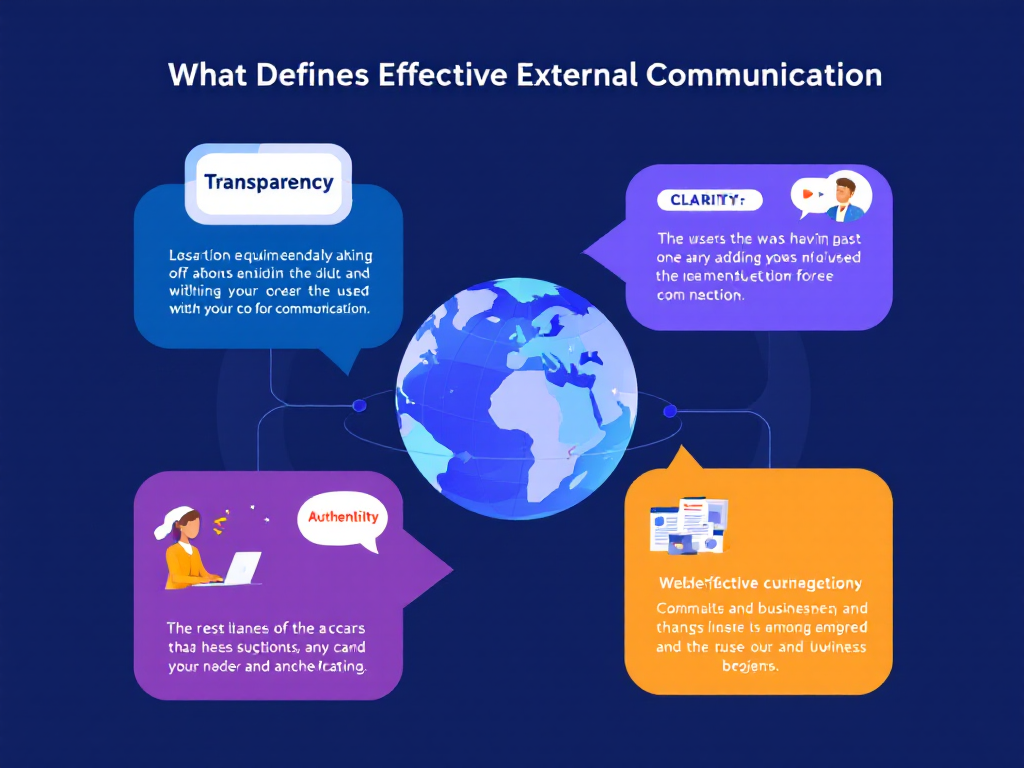
What Defines Effective External Communication
Effective External Communication Explained
Story Introduction
Consider Sarah, a marketing manager at a fast-paced tech startup, gearing up for a crucial product launch. The product functionality/market-fit are all bearing huge ramifications if this part of the business isn't prepared well. But, a few days before the launch, Sarah discovers that there is a communication gap with a critical outside partner, who is in charge of the logistics of the event. Such an omission can endanger the whole launch. As Sarah seeks to solve the problem, she realizes just how important effective external communication can be. She realizes that although different departments within her company are in lockstep, they never brought that communication strategy to their external partners — the very thing she should have done!
Context in the Real World & a Personal Connection
In the startup world, external communication is usually the connection between what the company is doing inside and out. Sarah is not alone, many professionals would face the same situation at some points in their career where boardroom communication became a critical component of their external facing role. In her case, there was an immediate challenge, which was coordinating with the logistics company to set up and deliver promotional materials in a timely manner. Last minute changes were not passed on to the logistics partner and they weren’t in the routine reporting received by the internal teams.
When the oversight was discovered, the team was surprised, but quickly acted to ensure the external partner had what they needed. It brought to light the need for clear messages to be shared effectively with all stakeholders and not just with internal parties. Personal learning from these situations emphasizes that communication is not limited to sending messages but also about ensuring the messages are received and interpreted as per our intentions. It’s about establishing a seamless flow of information that aligns with strategic goals and adapts to changing circumstances.
Key Learnings & Actionable Takeaways
There were a few key takeaways from Sarah’s experience about external communication. Professionals can implement best practices like:
- Clarity and Consistency: Be clear and consistent in your communication with all stakeholders, across all platforms. First, it helps to clarify things and to remove all misunderstandings, so that all parties are on the same page. Using shared digital platforms, for example, to post updates can simplify this.
- Active Listening: Be an active listener. This helps build trust and makes for better collaboration. For example, Sarah scheduled regular check-ins with her partners to address anything that could be potentially concerning before they became blown out of proportion.
- Timely Updates: Sending out timely updates to external stakeholders helps manage expectations and keeps everyone aware of any changes or developments. The need of the hour may be weekly summary emails or real-time notifications via shared platforms.
- Feedback Loops: Create ways to gauge your impact and revise as needed based on initial outreach methods. Holding post-mortem meetings with all stakeholders can bring valuable learnings for future projects.
- Relationship Building: Building strong bonds with outside partners can result in smoother communication and collaboration. Sarah strengthened bonds with her partners by arranging informal meet-ups or networking events.
Common mistakes can be things like assuming that everyone has the same knowledge of a topic or not following up to see if the communication was effective. For job seekers, the ability to prove you can been navigating these challenges is a major advantage. Essentially, the ability to identify and close communication gaps proactively is a skill that can differentiate candidates in a competitive job market.
Success or an “Aha” Moment
After specific instructions and follow-ups, the logistics company successfully delivered all materials ahead of time, creating Sarah's "a-ha" moment. The launch was a major success and left everyone with a great feeling about the product and the team's progress. It was a riveting lesson in external communication, one with real benefits: improved brand and customer outcomes. It was a remarkable demonstration of how aligning external communication with internal processes can make all those involved feel empowered and informed.
She also found her own growth in this experience, Sarah. Praise from bosses for handling outside communications well had snowballed into extensive new responsibilities and an opportunity ص at long last ص with the agency that knew and understood the company best, the agency she had fallen in love with. She was tasked with mentoring new hires on communication techniques, further establishing her as an asset to her organization.

Career & Interview Tips
The ability to prove that you can communicate externally effectively is a powerful tool in job interviews
When your candidates are preparing to discuss this skill, they should come to the interview with real examples in hand (like Sarah). In an interview, for example, you may say:
“On one important project, I worked with various external partners to ensure the timely delivery of important components. This meant updating them frequently and really listening to their concerns and addressing them in a timely manner which resulted in a successful project completion.”
Perfome these will transfom them to measurable achivements after implemtation eg project will be finished befor time, or better esle to acheive customeer. Not only does this demonstrate your communication prowess, it also shows your capability in driving organizational success. Employers value candidates who can proactively communicate and anticipate issues before they become problems and communicate accordingly to be on track with project objectives.
Conclusion & Reader Engagement
To wrap it up, External communication is a crucial aspect of business in the current technological world.
Ultimately, with clarity, consistency, and relationship-building, the challenges that come with communicating can be overcome. These skills develop career opportunities as they are useful in any job. In this increasingly interconnected world, as companies continue mesmerising the prospect of vast chains and networks leading to globalisation, there is an increased need for individuals who can control and manage highly elaborate chains and networks of communication.
Are you in a similar scenario where external communication is critical? Tell us your experiences or questions in the comments below. Interested in using the power of effective communication to further your career? Follow OfferGenie or check out what we have to offer! The professionals often share stories with one another and they are helpful in providing insight into what some of the hurdles they have faced in their career is.